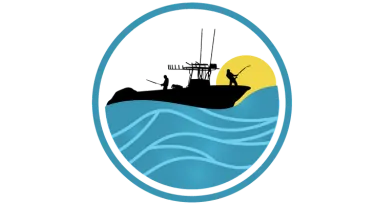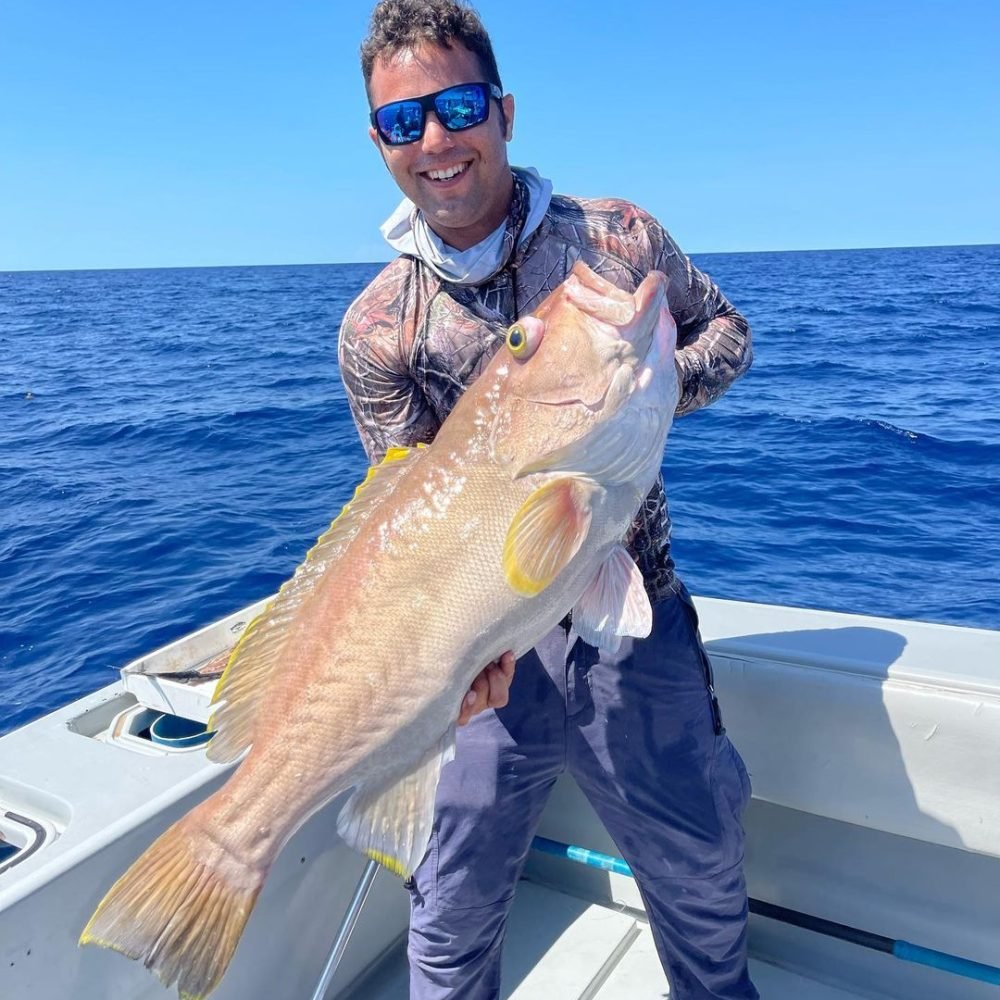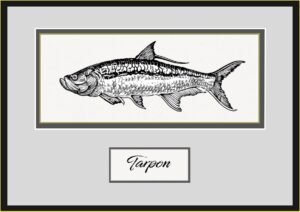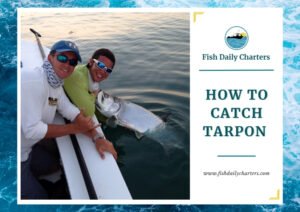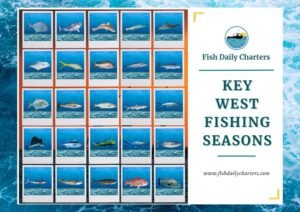Anglers of all skill levels know trolling as one of the most popular fishing methods. It’s a great way to explore different bodies of water and go after a wide range of fish species. Whether you like freshwater lakes or the vast saltwater ocean, trolling offers an enjoyable fishing experience.
Successful trolling demands the use of the right gear. Make sure you have sturdy trolling rods, dependable reels, and the right fishing lines and lures. Each piece of equipment contributes to the success of your fishing excursion. Setting up your gear properly and using it correctly makes a big difference in your ability to catch fish. Understanding the best trolling locations, whether in a lake, river or offshore, improves your chances of landing a big catch.
Each fish species has its own response to trolling methods. Successfully targeting specific fish like bass, trout, or marlin requires a certain level of skill and understanding. This guide offers a thorough look at trolling, including the gear you’ll need, its effectiveness, prime fishing locations, targeted species, and practical tips. Armed with this knowledge, you’ll be ready to catch fish and become skilled in the art of trolling, boosting your fishing adventures.
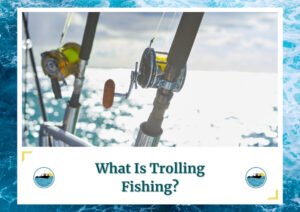
What is Trolling Fishing?
Trolling is a popular fishing method that involves dragging baited trolling lines behind a boat. This technique is great for covering more ground and improving the chances of catching fish. Whether you’re fishing in a lake, river, or the open ocean, trolling offers an exciting and productive way to enjoy the sport. Trolling is done in both deep water and shallow water conditions, with flexibility allowing you to choose a certain depth.
How Trolling Works
When trolling, a moving boat is used to pull multiple or a single line through the water, each with baits or lures that mimic the movement of chasing prey. The boat’s movement causes the lure to swim, dart, or wobble, attracting fish. You’re able to customize the technique for different speeds, depths, and lure types. This lets you target specific fish species.
Types of Bait and Lures Used in Trolling
For anglers, choosing the right bait or lures designed for trolling is essential for a successful fishing trip. Anglers use live bait, artificial lures, and even scents to attract fish. Popular choices include:
- Spoons: These metal trolling lures reflect light and wobble through the water, mimicking a swimming fish.
- Crankbaits: Designed to dive to specific depths, these lures have a realistic swimming action.
- Soft Plastics: These flexible lures are rigged in different ways to mimic different types of prey.
- Live Bait: Minnows, sardines, and other small fish used to attract larger predators.

How to Troll for Fish
Setting Up Your Fishing Rod and Reel
- Choose the Right Rod and Reel: Select a trolling rod and trolling reel that can handle the weight and strength of the target species.
- Attach the Lure: Secure the chosen bait or lure to the end of your fishing line using an appropriate knot.
- Position the Rod: Place the rod in a rod holder on the boat, making sure it is secure and at the proper angle.
Moving the Boat
- Start the Boat: Begin moving at a slow, steady speed, between 1.5 to 3.5 mph.
- Adjust Speed as Needed: Different fish species respond to different speeds, so be prepared to experiment with lower and higher speeds.
- Use GPS and Depth Finders: Navigate efficiently and find the best fishing spots using GPS and depth finders.
Monitoring and Reeling In
- Watch the Line: Anglers keep a close eye on their line for any signs of a bite.
- Respond to Strikes: When a fish bites, quickly grab the rod and start reeling it in, holding steady pressure.
- Be Prepared for the Fight: Larger fish will put up a fight, so be ready to change your technique and reel in carefully to avoid losing the catch.
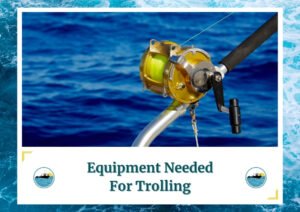
Equipment Needed for Trolling
Essential Trolling Gear
- Trolling Rod and Reel: A reliable rod and reel designed for trolling are essential. These tools must be strong enough to handle big fish while providing a smooth drag system for effective line management. Braided lines for stronger or bigger fish are also a must.
- Trolling Baits or Lures: Using the right bait or lure designed for trolling. Spoons, cut bait, and live baitfish improve your chances of catching fish.
- Boat with Motor: A motorized boat is essential for navigating through the water efficiently, helping you cover vast areas and regulate your trolling speed and direction.
Helpful Accessories
- Rod Holders: These secure your rods in place while you troll, freeing up your hands and keeping your rods steady.
- Depth Finder: This electronic gadget helps locate fish and find the optimal trolling depth, boosting your chances of a successful fishing trip.
- Planer Boards: These devices spread your lines out to the sides of the boat, allowing you to cover more water and avoid tangling lines.
Advanced Tools
- Downriggers: These are weighted cable systems that allow you to troll baits or lures at a preferred depth, which is useful for reaching fish that are deeper in the water column.
- Outriggers: Similar to planer boards, these are used to spread lines out further from the boat and used in offshore trolling for large game fish.
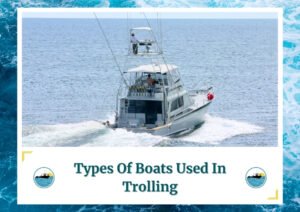
Types of Boats Used in Trolling
- Power Boats: Most anglers use powerboats for trolling because of their ability to cover large areas and maintain consistent speeds. These boats are equipped with different trolling equipment, such as rod holders, depth finders, and GPS systems.
- Fishing Boats: Specialized fishing boats designed for both freshwater and saltwater trolling usually have built-in features that support multiple lines, downriggers, and other trolling gear.
- Charter Boats: For those looking to experience trolling without owning a boat, charter boats offer a guided trolling experience with all the necessary equipment and expertise.

Why Trolling is Effective
Covering Large Areas
Trolling offers a great advantage by allowing you to cover large areas of water. Unlike traditional fishing techniques, trolling lets you explore several areas, improving your chances of finding fish. This is especially useful in vast bodies of water where fish are spread out.
Targeting Active Fish
Trolling works well because it goes after fish that are actively searching for food and swimming with groups of baitfish. Moving the bait or lure constantly imitates the natural movements of prey, increasing the chances of luring in predators.
Versatility Across Environments
Trolling is a flexible technique that is used in both freshwater and saltwater locations. It’s successful in catching a diverse range of fish, from small freshwater trout to large oceanic marlin. This adaptability makes it a popular choice among anglers of all levels of expertise.
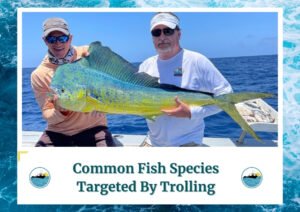
Common Fish Species Targeted by Trolling
Trolling is effective for a variety of fish species in both freshwater and saltwater environments. Here are some common species:
Freshwater Species
- Salmon: The Great Lakes and Pacific Northwest, are a popular place to catch salmon. They are a prime target for trolling due to their migratory patterns and aggressive feeding habits.
- Trout: Found in lakes and large rivers, trout are attracted to trolling setups that mimic their natural prey.
- Walleye: Often trolled for in the Midwest, walleye are known for their sensitivity to lure color and presentation.
- Pike: These aggressive predators are commonly found in northern lakes and are attracted to larger lures and baitfish.
Saltwater Species
- Mahi-Mahi (Dorado): Found in tropical and subtropical waters, mahi-mahi are known for their vibrant colors and acrobatic fights.
- Tuna: Species like yellowfin and bluefin are prime targets for those seeking to target tuna in offshore waters, known for their impressive speed and strength.
- Marlin: These large game fish are a top target for deep-sea trolling, especially in the Atlantic and Pacific Oceans.
- Sailfish: Known for their incredible speed and sail-like dorsal fin, sailfish are a prized catch in tropical and subtropical waters.

Where to Go Trolling
Freshwater Locations
- Great Lakes, USA: Known for abundant fish populations, ideal for trolling for salmon and trout.
- Lake Okeechobee, Florida: Offers great spots for bass and other freshwater fish.
- Columbia River, USA: Famous for its salmon runs, providing plenty of trolling opportunities.
Saltwater Locations
- Florida Keys, USA: Popular for trolling for mahi-mahi, tuna, and sailfish.
- Gulf of Mexico, USA: Known for its diverse marine ecosystem, it is a prime location for catching game fish like kingfish and red snapper.
- Bahamas: The deep, crystal-clear waters are perfect for trolling for marlin, wahoo, and other large game fish.
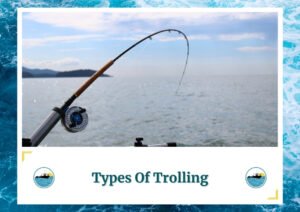
Types of Trolling
Flatline Trolling
- What it is: Angling without the need for weights or downriggers, setting the lines directly from the boat.
- When to use it: Ideal for shallow waters or when fish are near the surface.
- Why it’s effective: It allows for a more natural presentation of the bait or lure, making it easier to attract fish that are feeding near the surface.
Downrigger Trolling
- What it is: Using a downrigger, a weighted cable system, to troll baits or lures at specific depths.
- When to use it: Effective for reaching fish that are deeper in the water column.
- Why it’s effective: Precisely controls the depth of your bait or lure, ensuring it stays in the strike zone of deeper fish.
Planer Board Trolling
- What it is: Using planer boards to spread lines out to the sides of the boat, covering more water and reducing line tangles.
- When to use it: Useful for fishing in crowded areas or targeting fish that are scattered.
- Why it’s effective: It increases the spread of your lines, allowing you to cover more area and reducing the risk of lines crossing and tangling.
Tips for Successful Trolling
- Use the Right Speed: Experiment with different speeds, usually between 1.5 and 3.5 mph, to find the optimal one for the species you’re targeting.
- Vary Your Depths: Adjust the depths of your lines using depth finders and downriggers to locate where the fish are biting.
- Watch Your Lines: Stay focused on your lines to ensure immediate attention to bites.
- Adjust for Conditions: Adapt your speed, depth, and choice of lures based on wind, current, and water temperature.
- Use High-Quality Gear: Invest in top-notch rods, reels, and lures to handle the pressure of trolling and increase your chances of success.
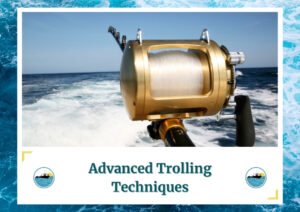
Advanced Trolling Techniques
Using Electronics
- Fish Finders: Use fish finders to locate schools of fish and determine the best depths to troll.
- GPS Systems: Use GPS to mark successful trolling paths and return to productive fishing spots.
Multiple Lines Strategy
- Spread Lines: Use multiple lines at different depths and distances from the boat to increase your chances of catching fish.
- Vary Lures: Experiment with different types of lures on each line to see which ones are most effective.
Seasonal Adjustments
- Spring and Fall: Fish are often found in shallower waters, so adjust your trolling techniques accordingly.
- Summer: Fish may move to deeper, cooler waters, requiring adjustments in trolling depth and location.
- Winter: In some regions, trolling is effective in deeper lakes where fish gather.

Book Your Daily Fishing Charter in Key West, Florida!
Ready to experience the thrill of open ocean trolling in one of the most beautiful locations in the world? Join us for a day on the water in Key West, Florida! Our experienced guides will take you to the best fishing spots, provide top-notch equipment, share their expert knowledge, and make sure you have a successful and enjoyable trip.
Don’t miss out on the adventure of a lifetime—book your daily fishing charter in Key West today and create unforgettable memories on the water!
Conclusion
Trolling is a great way to explore large fishing areas and target a variety of fish species. By mastering the basics, using the right gear, and following helpful tips, you can improve your fishing experience and increase your chances of a successful catch. Whether you’re new to fishing or, on the flip side, a seasoned angler, trolling offers an exciting opportunity to take part in the sport. So, get your gear ready, hop on a boat, and set off on a trolling adventure for your next water outing!
